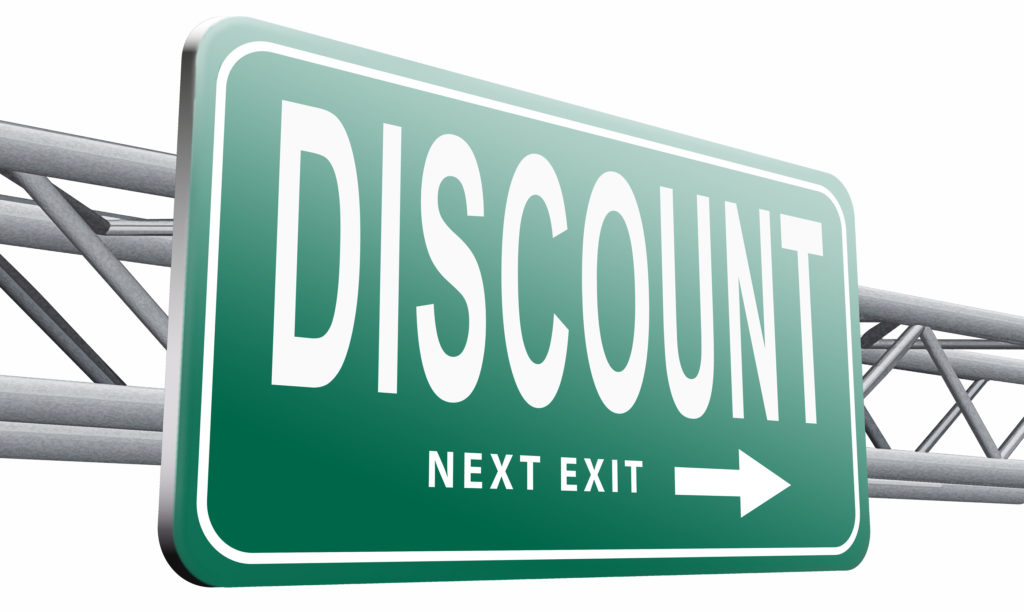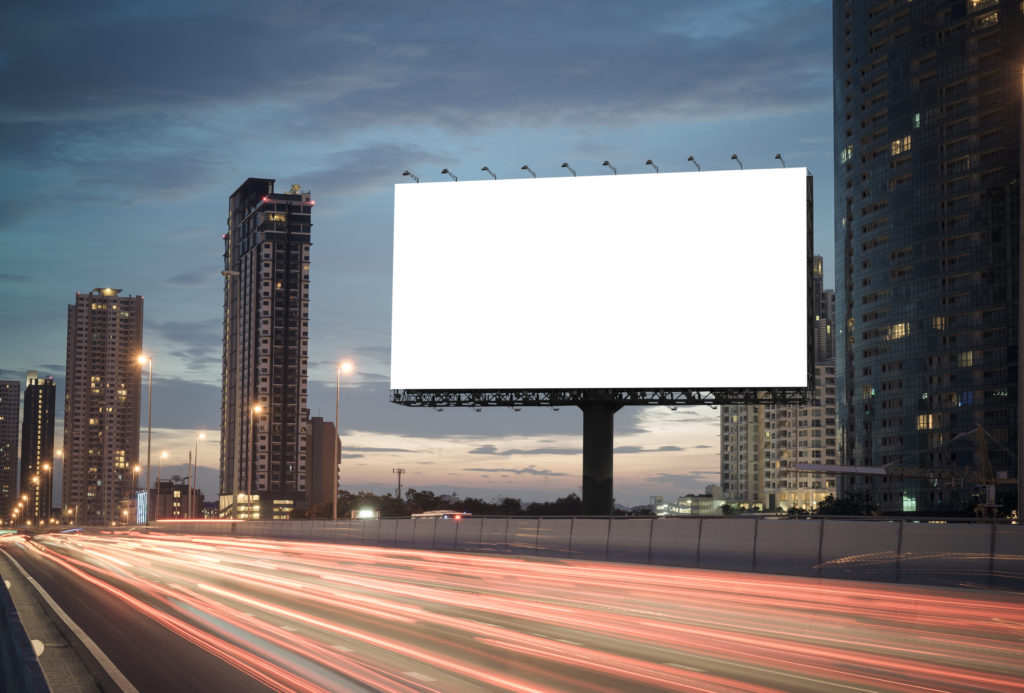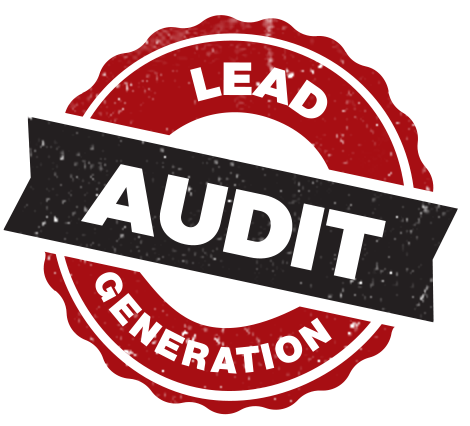Posted by Rich Harshaw on June 30, 2017.

You know those parents who won’t shut up about how great their kids are because they think you’re as interested as they are?
“Little Johnny rolled over for the first time.”
“Suzy got a ‘B’ on her English midterm.”
“Billy sneezed seven times yesterday.”
They’re proud of their kids, and they should be.
But outside of their family and maybe some friends, most people don’t care that little Johnny rolled onto his stomach.
That might sound harsh, but you know what they say about the truth.
(Answer: It hurts.)
This apathy applies to your prospects and industry awards you’ve received.
Outside your small circle—employees, immediate family, etc.—no one cares about the awards you’ve won.
Sure, it’s great you won.
But your prospects tune that stuff out.
It may seem interesting to YOU… but no one else gives a crap.
Case in point…
I once had a client who won the Better Business Bureau’s “Torch Award” for the second straight year.
This is actually a pretty great accomplishment—the BBB doesn’t dole out this award to just any company. You have to demonstrate some serious leadership and ethical standards just to be nominated.
Naturally, the client wanted to advertise such a big achievement in hopes of winning more business. So he wrote an advertorial (an ad that looks like an article) about his company’s Torch Award.
Here’s a look:

Looks fine, right?
Wrong.
When the client asked for my feedback on the advertorial, I said, “I’m glad you won the Torch Award for the second time. But I hate to tell you—nobody cares.”
The reason? It’s BORING.
As in, “random stranger in line at Target telling you her kid got his first tooth last night” boring.
Think about it. This is an advertisement that’s supposed to look like an article. Articles are supposed to provide the audience with interesting content that hooks them on every word.
This advertorial does not do that. It sounds like it was written by and for the employees of the client’s company.
So I threw down a gauntlet for the client: Reposition the ad.
Instead of telling people he won the Torch Award, provide an interesting story that helps them understand why he won it.
I asked the client for a specific example of demonstrating the ethics the award requires. He thought for a minute and then told me a story of when a supplier screwed up a door order two times in a row.
The first time, the supplier cut the door too short. The second time, they sent the wrong material (steel instead of fiberglass).
The customer was upset but agreed to sign off on the second door as long as my client gave him a hefty discount.
My client didn’t do that. Instead, he ordered and installed the RIGHT door… and then refunded ALL of the customer’s money.
All told, the client took an $8,200 loss on the project.
Now THERE is a story.
I told the client all he had to do was tell that story in the ad. I helped him write it, and voila…

I’d say that’s light-years more interesting than “Company Wins BBB Torch Award,” wouldn’t you?
Yeah… and here’s the proof:
- The client ran the revised ad at a cost of $4,000.
- The ad returned over $50,000 in sales. That’s an ROI of 12 to 1.
- They spent the same amount of money on “traditional” ad placements in the same newspaper and barely received a phone call.
- Prospects who called after reading the advertorial said they felt they could trust the client more than other contractors.
- The lead quality was significantly better, too—they were able to close the leads at a rate of 50% to 60%, double their usual closing ratio of about 30%.
Getting people to pay attention and engaged in your message is 90% of the battle. When you accomplish that, great things happen.
So the next time you sit down to write an ad, think about what your prospect would find interesting. Don’t just tell them you won an award; give them a concrete example of why you won it—one that’s fascinating and relevant to THEM.
P.S. In addition to our online marketing services, we provide turnkey offline marketing solutions. This includes ad writing, radio, television, and direct mail. We can even plan your media buying and negotiate the best deals on your behalf. So if you’re struggling to create an offline marketing campaign that resonates with your audience and produces sales, get in touch with us. We’ll take care of everything.
Posted by Rich Harshaw on February 28, 2017.

If I asked the average contractor his goal for his business, he’d likely come at me with an annual dollar figure.
$2 million in sales. $10 million in sales. And so on.
While these goals are admirable, they’re also vague and hard to wrap your head around. And since they’re hard to conceptualize, they lack motivation power.
That’s why we encourage contractors to determine their MOST IMPORTANT NUMBER.
Here’s what I mean…
Rather than setting a vague annual sales goal, determine the percentage of sales each product you sell represents.
For example, let’s say your breakdown is 60% windows, 25% siding, 10% roofing, and 5% miscellaneous.
Your “bread and butter” product is obviously windows, so we’ll use that to figure out your numbers (it’s much easier to focus on one thing than on many).
Determine your typical sales price and margin on your average window project, as well as how many window projects you sell every month.
We’ll say your answers are as follows:
- $8,000 sale price
- $4,000 margin
- 8 jobs per month
This means you typically sell 8 window projects for a total of $64,000 and a margin of $32,000. Make this your baseline.
Once you figure out these numbers, ask yourself this:
“To get my business to where it fulfills all my financial goals, how many window projects per month would I need to sell?”
Caveat: I’m not talking about an answer like, “$20 million, so I can party on a yacht like Leonardo DiCaprio.”
I’m talking more along the lines of how much you need for the lifestyle you want and give yourself a comfortable retirement.
Take your time and figure out the answer. And then write it down.
(For many folks, the answer is a personal income between $300,000 and $1 million per year.)
Once you’ve written down your number and calculated your sales, your brain is able to focus on the necessary work to achieve your goal. It becomes a simple measuring stick—in a given month, simply compare your results vs. your most important number.
Now let’s say you need 25 jobs per month to reach your most important number. That would work out to $200,000 in sales and $100,000 in margin.
If you achieved that many sales, how much would you spend on marketing to get that number consistently?
Most contractors spend up to 15 percent of the SALE price to get a sale, so that would be an extra $20,400 in marketing. This is in addition to the $9,600 you already spent to get the original $64,000 in sales, so that works out to a total marketing budget of $30,000.

You need to spend money to make money. Plain and simple.
I’m not saying an extra $20,400 is available in cash flow to spend on marketing every month.
And I’m not saying that even if it were that you’d instantly get to 25 sales a month.
BUT…
You now have a formula for succeeding in your business: Spend $30,000 a month on marketing to get to 25 window sales a month.
This much is certain:
NOT spending incremental dollars on marketing is NOT going to get you where you want to go. And this is the major obstacle holding back nearly every single remodeling company I ever talk to.
Instead of thinking in terms of specific budgets required to hit specific numbers of specific kinds of sales, they have big vague numbers that they have no clue how to get to.
Which leads to the final, all-important question: If you DID spend $30,000 a month on marketing JUST FOR WINDOWS, what would you spend it on to get the 25 sales?
I’ll answer that question in my next post. I’ll also show you how easy it is to get the money—believe it or not, it’s probably right under your nose!
But for now, I simply want you to figure out: WHAT IS YOUR MOST IMPORTANT NUMBER?
Knowing this simple number will liberate your brain; you’ll be able to see that your number is not nearly as intimidating as you may have thought.
P.S. Today, we determined your Most Important Number. Tomorrow, I’ll go into the nitty-gritty on how to acquire the marketing budget necessary to get to that magical number. Stay tuned.
Can’t wait until tomorrow? Check out this post that I wrote last year targeted toward smaller and newer remodeling contractors. Caution: It’s stern advice.
Posted by Rich Harshaw on February 17, 2017.

Ever heard of “remainder advertising”?
If you haven’t heard the term, you probably know the concept.
Remainder advertising is unsold advertising space in newspapers, magazines, radios, and TV that you can buy for a discounted price.
It’s basically the “clearance” aisle at a department store. It’s the stuff no one wanted, so the seller marks it down because they figure it’s better to sell it at a discount than not at all.
In the past, clients have asked me whether it’s good business to buy remainder advertising.
My answer: It depends on your goals.
I’ll break down remainder advertising into its pros and cons, so you can judge for yourself whether it’s worth buying.
Cons Of Remainder Advertising
Let’s start with the bad.
When you buy remainder advertising, you have little to no control of when or where your ad runs, so you will not reach the same audience consistently. This makes remainder advertising a poor strategy if you’re looking to build a recognizable brand.
Remainder advertising can also be erratic. A station or publication could have two or three spots available one week, and zero spots the next three. It’s a crapshoot.
Pros Of Remainder Advertising
Besides the obvious advantage of saving money on ad space, remainder advertising can be a good direct response vehicle to generate immediate leads.
I’ll give you an example…
Back in 2003, we wanted to generate leads for a business opportunity and didn’t care when the leads came in.
We bought remainder advertising on the Rush Limbaugh show, which was broadcast on 530 radio stations.
The normal rate for a 60-second spot was $24,000, but we bought the show’s remainder advertising for $13,000 per spot. We saved 46% on ad space for one of the most popular radio shows in the country.
The show didn’t always have spots available; like I said, remainder advertising is erratic. But in this case, it served our business needs well because it produced an immediate ROI.
Bottom Line…
If you’re in “hunting” mode (i.e., direct response mode), remainder advertising is a good way to get leads right here, right now.
If, however, you’re a company doing $2 million or more per year that needs to build your brand, you have better avenues for doing so. You need to reach the same audience on a consistent basis to generate business for your company in the future. And you’re not going to do that if you’re randomly popping in and out of stations and publications.
So if you can’t decide whether to snatch up some unsold ad space, first determine your goals. That will give you your answer.
P.S. If buying media gives you a brain-splitting migraine, we can do it for you. We’ve bought over $100 million in radio, TV, and print media on behalf of our clients. We’ll meticulously research the market and individual stations/publications, and then negotiate rates that are among the best for those outlets. We can also create powerful, lead-generating ads for you. Find out more here.
Save
Posted by Rich Harshaw on November 29, 2016.

I’m a big fan of the billboard.
Why?
Because with a little research and a good, creative message, billboards can work stunningly well for medium – to large-sized remodeling companies.
But you have to do them right; otherwise, their big old wastes of space in the sky.
Here are the nine secrets of billboard-advertising domination:
1. Use billboards to supplement other advertising
Use billboards as part of a larger marketing campaign—they are most effective when they extend your brand’s reach. Radio and billboard go especially well together, since both are experienced (primarily) while driving.
The key here is to educate people about your company and identity (brand promise) in other media so they already know who you are, what you stand for, and why you’re a good choice to buy from. Then the billboard does its job by triggering that pre-existing information in their brain.
2. Location, location, location
Usually, your best bet for a billboard is a “right-hand reader,” which is a billboard on the right side of the road (and therefore closest to the cars passing it). “Cross readers”—billboards on the left side of the road—are often harder to see.
That said, I’ve seen plenty of right-hand readers placed right after a bridge or another spot that allow for only a split-second view.
The key is to make sure you see where the board is located before you invest in it.
3. Avoid roads with a lot of billboards
The more billboards on any particular road, the harder it is for yours to stand out. Nab yourself a prime billboard location in which yours is the only one clearly visible from a 100-yard range.
4. Brand consistency
If you have multiple billboards, make sure they have a consistent look, tone, color, and feel among them, as well as the rest of your marketing materials. Remember, one of the primary goals of the billboard is to trigger someone to remember what they already know about your company. Having consistency in your billboards will enhance this effect.
5. Simplicity is your friend
One of the most egregious mistakes I see with billboards is too many words, and/or text that’s too small. Billboards should generally be limited to three to seven main words (i.e., not including phone numbers, web addresses, etc.) so that people can read it at 60 MPH and absorb the message. Don’t assume people will pass the billboard several times a week and have a chance to “read the rest of the sign.”
Ensure the billboard contains enough color contrast so the words “pop.” Also make sure the font is clean, clear, and simple… and do NOT put words on top of images.
6. Get clever, get noticed
Like any other advertising, getting noticed is half the battle. And since there is so little space on a billboard, I’m a proponent of getting clever with the image and message. Don’t do anything obnoxious, but feel free to flex your creative muscle.
Here are a few ideas I came up with for a home services company:
- Ph.D. in PDQ (fast service)
- Greased Lightning (fast service)
- Orange Ya Gonna Call Us? (picture of their signature orange trucks)
- Faster Than A Speeding…. (picture of signature orange truck)
7. Memorable phone and email
Anytime you utilize a non-print advertising method, you need to make sure you’ve got a good, memorable phone number and web address. You can research good phone numbers at TollFreeNumbers.com. I highly recommend going toll-free due to the large number of area codes in most areas.
Don’t worry, for most parts of the country (small towns excepted), people won’t be scared off by 800 numbers. Also, make sure your web address is easy to remember!
8. Let your billboards percolate
Like other types of branding, billboards become more effective the longer they run. Don’t run billboards for a few months and quit—you’re just wasting your money.
Instead, find good locations, put up a good message, and let your billboards build powerful brand recognition for your company over the years. Change up the message every four to six months (negotiate this into your contract) to keep your billboard advertising fresh.
9. The moving billboard
If you have trucks, wrap them in your branding and—voilà!—get instant mobile billboards. The few thousand dollars it takes to wrap your plain work vehicles will pay off many times over in sales.
Need help?
If you need help creating an effective billboard campaign message, MYM can help. Shoot us an email or pick up the phone and call us at (682) 514-9199. We’d love to help.
P.S. Next blog post I’ll reveal a PPC tactic that works amazingly well that practically no one uses. Why? Because they think it’s unethical! I’ll not only tell you why this PPC tactic is 100% ethical, but also how to use it as a weapon against your competitors.














